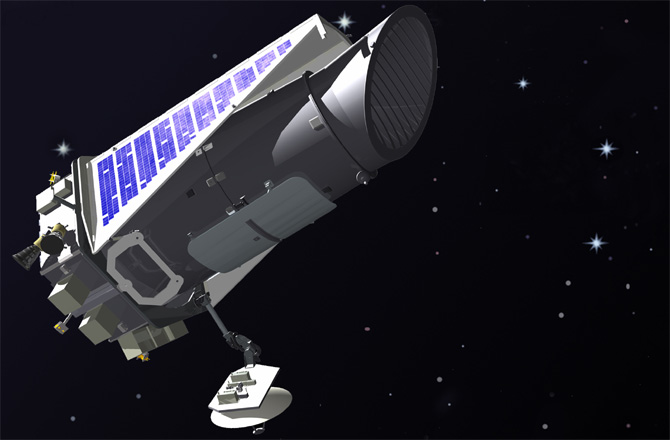
NASA has just announced in a press release that unmanned Kepler Spacecraft is finally out of emergency status, thanks to the painstaking work from the telescope’s engineers.
In case you are not familiar with the story, a few days ago, Kepler declared an emergency status while drifting in space, a whopping 75 million miles away from home.
Though, it was not until Thursday, April 7, that NASA had a scheduled check-in with the spacecraft, when they also figured that Kepler could be in deep trouble.
Due to the degree of the potential damage, NASA granted a priority access to communications through its Deep Space Network for the $600 million spacecraft. Thankfully, Kepler’s engineers, based in Silicon Valley at the Ames Research Center, have managed to resolve the issue in a short time frame.
NASA further adds that Kepler is safe and sound, while it directed its communications antenna toward Earth, “enabling telemetry and historical event data to be downloaded to the ground,” thus enabling the space agency to analyze the issue that took place and avoiding any similar incidents in the future.

Furthermore, when it comes to Kepler itself, the spacecraft was launched on March 6, 2009, from Cape Canaveral Air Station, operating under the Discovery program, which emphasizes on finding new potentially inhabitable planets.
Up until now, Kepler has detected 4,696 candidates, with more than 1,000 of which established as planets, and 12 classified under “small habitable” zone — the term refers to a potentially life-supporting area located near a star.
“The anomalous EM event is the first that the Kepler spacecraft has encountered during its seven years in space,” NASA states.
Since its original mission has been accomplished — despite the technical problems that happened in the process — Keppler has now been assigned to a secondary mission, dubbed “K2 Campaign 9“, where 39 of the 270 exoplanet candidates identified by the spacecraft have been confirmed.
The main target of Campaign 9 is the “study of gravitational microlensing events” in Milky Way.











